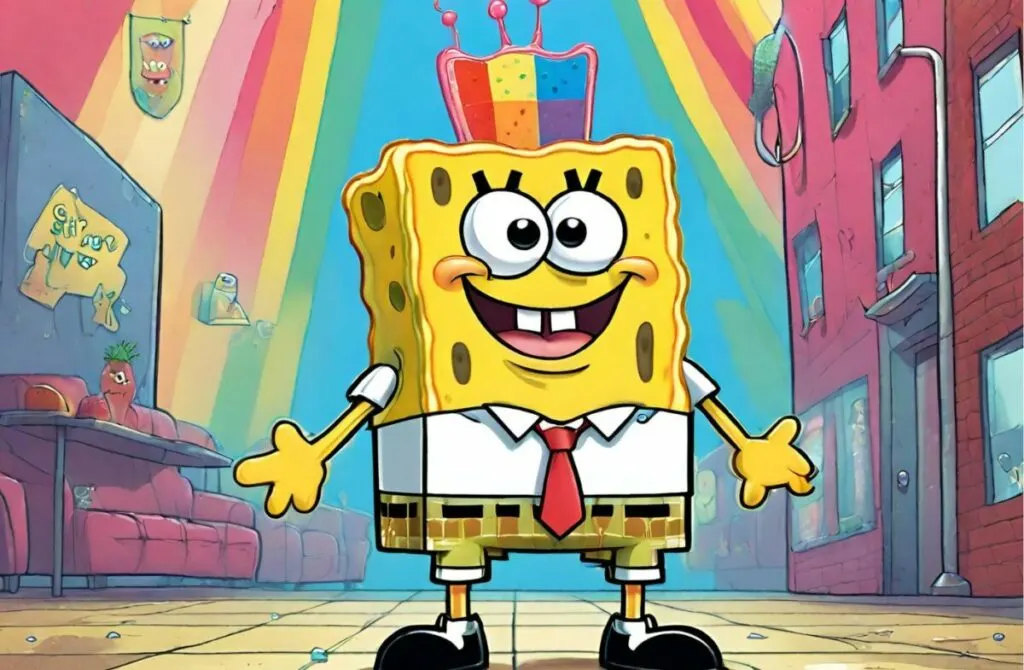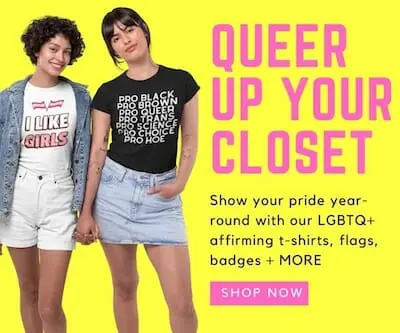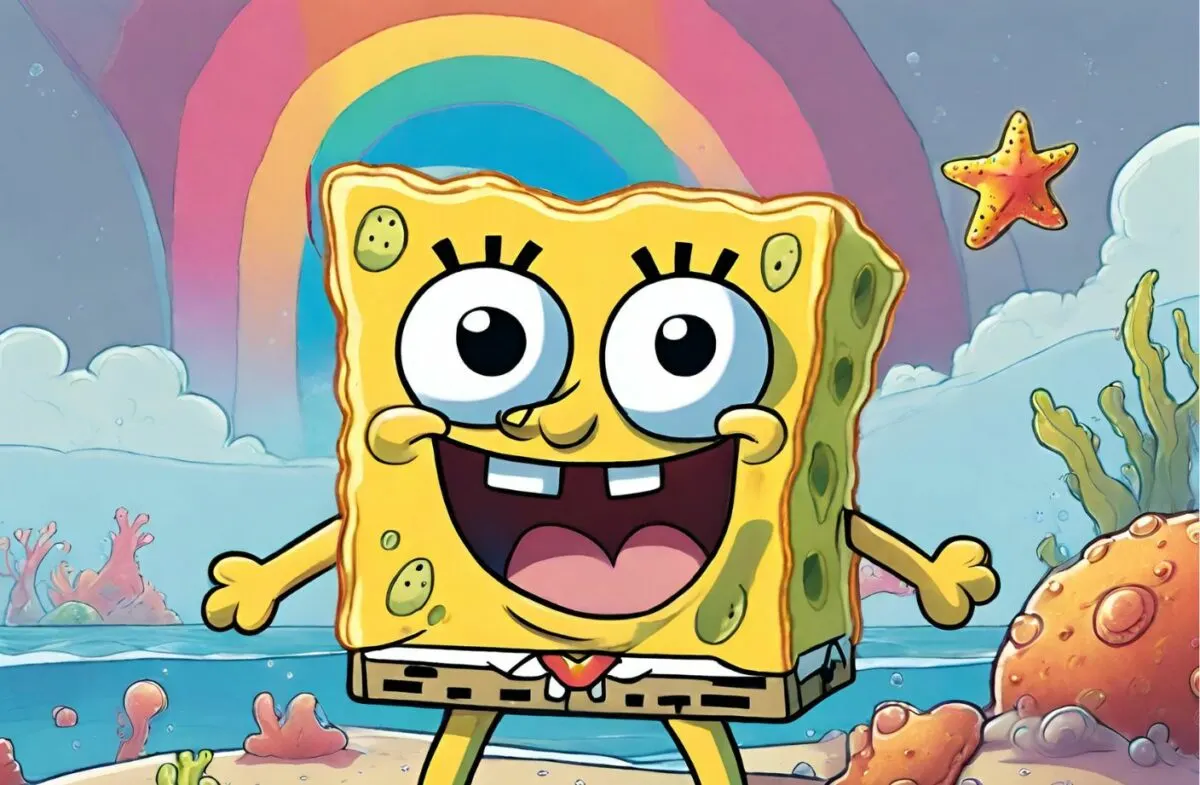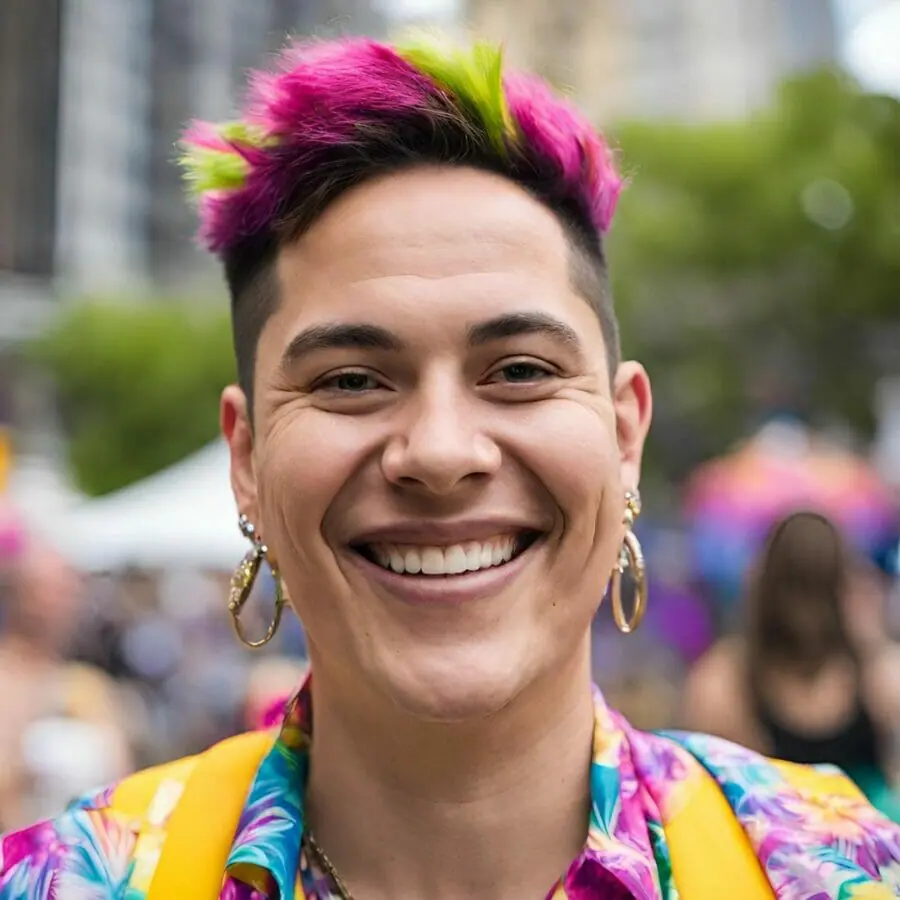Because arousal is a mysterious phenomenon that no one understands, it can happen to the best of us. Still, most people try not to think of SpongeBob SquarePants sexually and probably never even consider if SpongeBob SquarePants is Gay. SpongeBob is undoubtedly well-known to many people, but should you provide some background information for the occasional reader who has spent the last 21 years living in a pineapple under the sea?
Well, Cartoon network Nickelodeon airs the award-winning SpongeBob SquarePants series. It was made by the late animator and marine biologist Steve Hillenburg. SpongeBob, a delightful character with contagious optimism, is the protagonist of an underwater world that has been expertly portrayed.
It is good to say that, in terms of internet culture, Spongebob is nothing short of an LGBT icon. However, in case you missed it, everyone’s favorite yellow, porous, and absorbent cartoon figure may have debuted in 2020. Yes, Nickelodeon has fostered online rumors and tested our ability to create memes. So you are wondering what makes Spongebob gay. Well, the evidence is not far from the tweet on June 13, 2020, Nick tweeted on his account: “Celebrating #Pride with the LGBTQ+ community and their allies this month .”
Whatever you choose to think about Spongebob’s sexuality. The talking yellow sponge is and will always be adored and popular culture. And we enjoy seeing it.
Below are some of the proofs that Spongebob is gay.
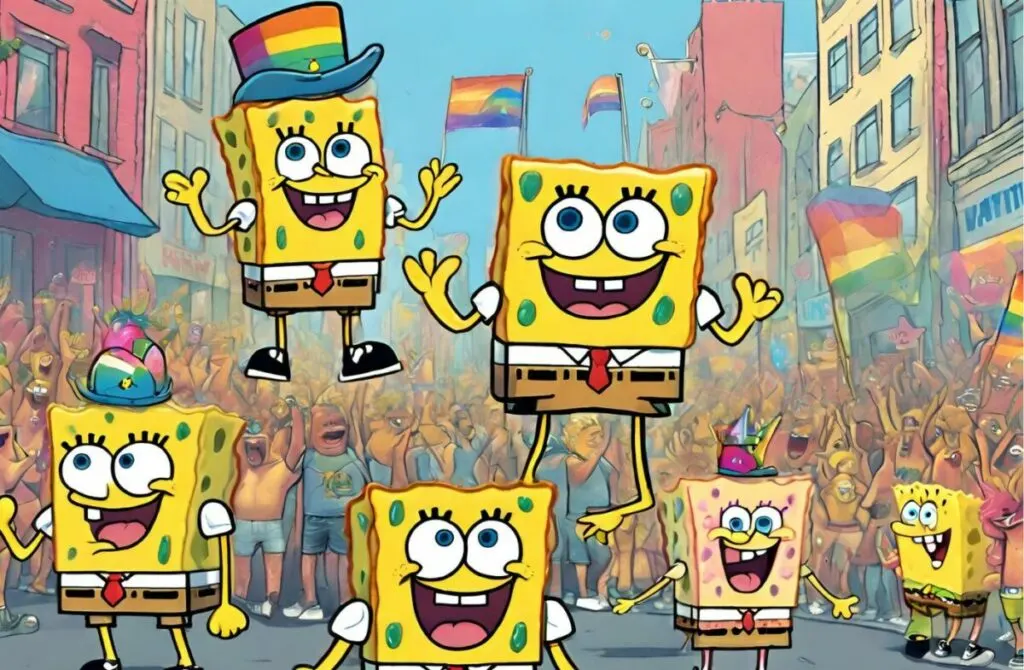
In this article we will cover...
- #1) Patrick And SpongeBob Romantic Relationship
- #2) Nickelodeon Tweet In 2020
- #3) The Individual Was “Too Sexy” In A Burger King Commercial
- #4) The Show Disrupts Children’s Ability To Focus
- #5) Video Sponsored By Gay Organization
- #6) A Fish Phallus That Is Visible.
- #7) Erotic Episodes
- #8) Photos of Spongebob with LQBTIA Characters
- #9) The Primary Purchasers of Spongebob were Gay
- #10) Some Straight Individuals Might Be Uncomfortable
#1) Patrick And SpongeBob Romantic Relationship
The vibrant and dynamic relationship between SpongeBob SquarePants and Patrick Star has long been a beacon of intrigue and speculation among fans. This unique bond transcends the typical boundaries of friendship, hinting at a deeper, romantic connection that challenges traditional narratives. SpongeBob SquarePants is Gay, a perspective bolstered by the myriad of queer-passing moments shared between him and Patrick. Their interactions are not just endearing but resonate with the essence of a partnership that defies conventional labels.
SpongeBob’s character, with his exuberant joy and emotional depth, coupled with moments where he embraces traditionally feminine attire or roles, further enriches this narrative. For instance, his delight in being perceived as a “pretty girl” or willingly assuming a motherly role in the care of a baby clam alongside Patrick—where they navigate the nuances of a non-traditional family unit—speaks volumes. These instances are not merely comedic; they are subversive acts that challenge gender norms and societal expectations.
The episode “Rock-a-Bye Bivalve” from 2002 became a cultural touchstone for its portrayal of SpongeBob and Patrick as co-parents, offering a glimpse into a domesticity that few children’s shows dare to explore. This portrayal, while wrapped in the show’s characteristic humor, subtly champions the idea of love and family in all its forms. It’s a testament to the progressive undercurrents that have always flowed through the heart of the show, inviting viewers to embrace a broader spectrum of love and identity.
The evidence woven throughout the fabric of the show suggests a narrative far richer and more complex than what meets the eye. The relationship between SpongeBob and Patrick, characterized by mutual affection, support, and moments that challenge traditional gender roles, serves as a powerful emblem of queer representation. SpongeBob SquarePants is Gay – a statement that, when considered within the context of his relationship with Patrick and his joyful defiance of norms, opens up a space for more inclusive and diverse narratives in children’s programming.
#2) Nickelodeon Tweet In 2020
The persuasive argument that SpongeBob SquarePants is gay gains significant support from a notable event in 2020, when Nickelodeon, the network behind the beloved animated series, made a public acknowledgment aligning SpongeBob with the LGBTQ+ community. This acknowledgment came in the form of a tweet during Pride Month, explicitly celebrating with the LGBTQ+ community and their allies, and featuring SpongeBob among other LGBTQ+ characters. The importance of this cannot be overstated; it marks a deliberate recognition by Nickelodeon of SpongeBob’s place within the LGBTQ+ spectrum, effectively challenging previous assertions by the show’s creator, Stephen Hillenburg, who had described SpongeBob as “somewhat asexual.”
While Hillenburg’s characterization of SpongeBob as reflecting the asexuality of real sea sponges had been a point of discussion, Nickelodeon’s statement during Pride Month serves as a pivotal moment, suggesting a broader interpretation of SpongeBob’s identity. This move by Nickelodeon is not just a nod to inclusivity but a significant stride towards embracing and representing diverse identities in children’s programming. It signals a shift in how characters can be understood and celebrated for their identities, including those that resonate with the LGBTQ+ community.
Thus, by integrating SpongeBob into its Pride Month celebration, Nickelodeon has contributed to the perception and acceptance of SpongeBob SquarePants as gay, marking a momentous step in the representation of LGBTQ+ characters in media. This acknowledgment goes beyond mere speculation or interpretation of the character’s behavior; it is a direct link made by the network itself, positioning SpongeBob as an icon within the LGBTQ+ community and affirming his status as a gay character in the eyes of many viewers and fans around the world.
#3) The Individual Was “Too Sexy” In A Burger King Commercial
The debate surrounding SpongeBob SquarePants’ sexuality found an unexpected piece of evidence in a 2009 Burger King commercial, which, though ostensibly aimed at promoting a kids’ meal, ventured into controversial territory by incorporating sexualized imagery. The commercial, parodying Sir Mix-a-Lot’s iconic ‘Baby Got Back’ with a twist on preference for “square butts,” featured dancers with exaggerated square-shaped padding to mimic SpongeBob’s form, all while the animated character joyously danced among them. This playful yet provocative representation sparked criticism from the Campaign for a Commercial-Free Childhood, which condemned the ad for its objectification of women through sexualized images.
This commercial, with its overt sexual undertones and SpongeBob’s central role, fuels the conversation about his sexuality. The choice to associate SpongeBob so closely with a song known for celebrating specific body types, and to do so in a manner that blurs the lines between silliness and sexualization, can be seen as a nod to the character’s appeal beyond mere children’s entertainment. The controversy surrounding this advertisement, and the discussions it ignited about what is deemed “too sexy” for a character like SpongeBob, inadvertently contributes to the perception of SpongeBob SquarePants as gay, showcasing how even the commercial endeavors of the franchise engage with themes of sexuality and attraction, albeit in a playful and subversive manner.
#4) The Show Disrupts Children’s Ability To Focus
The argument that SpongeBob SquarePants is gay finds an unconventional angle in the discussion about the show’s impact on children’s cognitive abilities. Critics and some research suggest that the fast-paced nature of SpongeBob SquarePants, characterized by rapid scene changes and energetic storytelling, might disrupt children’s ability to focus and maintain attention. This aspect of the show’s structure, however, is a leap from the usual narrative analysis to its potential implications on viewers’ perceptions of sexuality and content appropriateness.
The American Academy of Pediatrics’ findings that such energetic content may affect preschoolers’ concentration inadvertently opens a dialogue about what is deemed suitable for children. The controversy stems from the assumption that if a show like SpongeBob SquarePants, with its vivid, rainbow-infused animation and SpongeBob’s own flamboyant expressions—such as his enthusiastic rainbow hand wave—can influence attention spans, it might also carry undertones not immediately associated with children’s programming. This leap to sexual content, however, is a significant stretch, as the show’s creators and Nickelodeon’s vice president, Jane Gould, have defended it as entertainment not specifically tailored for the youngest viewers, thus challenging the notion that its fast pace inherently suggests unsuitability due to hidden sexual materials.
Linking the show’s dynamic pace to a broader discussion on content appropriateness and SpongeBob’s sexuality requires a nuanced understanding of media influence and the diversity of viewer interpretations. While the connection between the show’s stylistic choices and its impact on children’s cognitive development is a subject of legitimate study, extrapolating this to affirm SpongeBob SquarePants is gay represents a considerable jump in logic. Instead, such discussions highlight the complexity of interpreting media content and the varied ways individuals engage with animated characters beyond their on-screen actions.
#5) Video Sponsored By Gay Organization
The debate over SpongeBob SquarePants’ sexual orientation gained another layer of complexity in 2005 when a promotional video featuring SpongeBob, among other children’s characters, singing in unison sparked controversy. This video, though not explicitly referencing sex, sexual lifestyle, or sexual identity, came under fire from a Christian group in the US. Their criticism was not rooted in the content of the video itself but in its association with a gay rights organization, which sponsored the production. This sponsorship led the group to assert that SpongeBob was being used to advocate for homosexuality, despite the absence of direct references to LGBTQ+ themes within the video itself.
This incident underscores the sensitivity surrounding media influences and the interpretation of character affiliations based on the organizations involved with them. The Christian group’s reaction to the video reflects broader societal tensions around the representation of LGBTQ+ identities in children’s programming, highlighting the potent impact of association and sponsorship in shaping public perceptions. Given the vocal support of SpongeBob by members of the LGBTQ+ community and the controversy stirred by his appearance in a video sponsored by a gay rights organization, it becomes increasingly persuasive to argue that SpongeBob SquarePants is gay. This association, whether intentional or not, reinforces the character’s standing as an icon within the LGBTQ+ community and illustrates how external affiliations can significantly influence character interpretation beyond the narrative scope of their original programming.
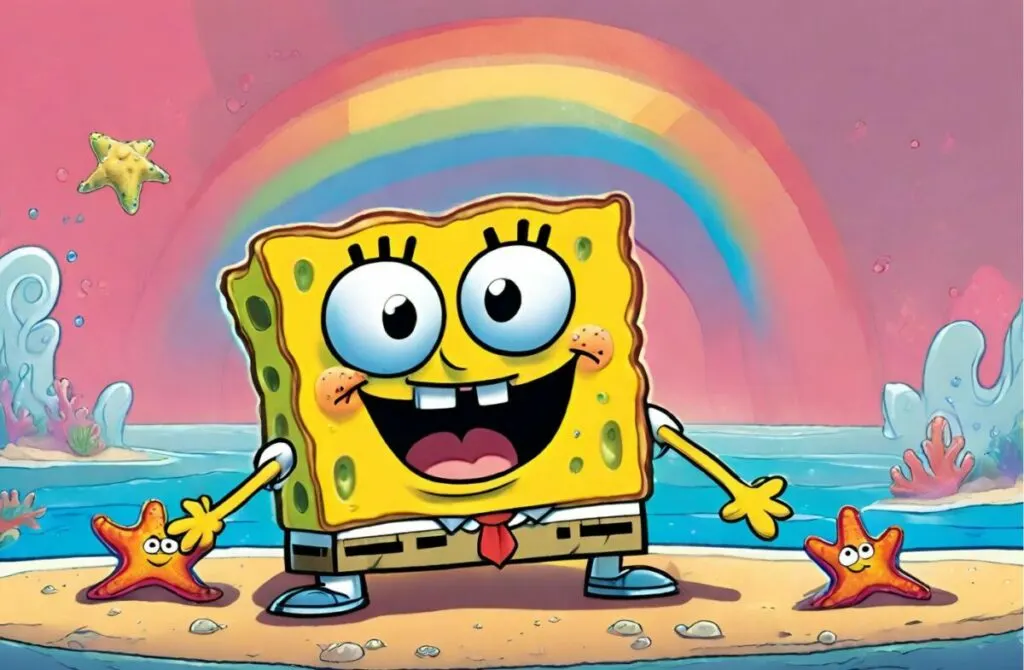
#6) A Fish Phallus That Is Visible.
The argument that SpongeBob SquarePants is gay finds yet another intriguing point of discussion in the show’s use of visual humor and subtle innuendos. One particular instance that fuels this debate occurs in the episode “Bubble Buddy” from Season 2, where a visual gag involving a fish character has been interpreted by some viewers as a nod to adult humor, specifically featuring what appears to be the fish’s genitalia. This detail, though seemingly minor, opens up a broader conversation about the intentions behind the show’s comedic elements and their potential implications regarding sexuality.
Critics argue that the inclusion of such a visual joke, especially in a show predominantly watched by children, is neither accidental nor innocuous. The argument gains further weight from an episode where a misunderstanding leads to a humorous exchange between SpongeBob and Patrick, suggesting a misheard phrase related to genitalia. Although played for laughs, this moment has been interpreted by some as a cleverly disguised reference to adult themes, further suggesting the show’s engagement with topics of sexuality more subtly than it might appear on the surface.
These instances, while humorous and arguably innocent in the context of the show’s overall comedic tone, contribute to the perception of SpongeBob SquarePants as a character and a series that embraces a more progressive stance on sexuality and gender norms. The presence of such content, whether intentional or interpreted by the audience, alongside the character’s established popularity within the LGBTQ+ community, supports the argument that SpongeBob SquarePants is gay. This stance not only reflects a broader acceptance of diverse sexual orientations but also highlights how children’s programming can engage with complex themes in ways that resonate with wider audiences.
#7) Erotic Episodes
In the vibrant world of Bikini Bottom, SpongeBob SquarePants has long been a beacon of humor, adventure, and, for many, a symbol of LGBTQ+ representation. This interpretation gains further traction when considering episodes that contain humor and visuals that could be interpreted as having adult or erotic undertones. Critics and fans alike have pointed out moments within the series that, upon closer inspection, appear to challenge traditional boundaries of children’s programming, incorporating jokes and scenarios that resonate with more mature themes.
One such instance involves SpongeBob in a situation where his pants are positioned in a way that humorously suggests an erection on his nose, a visual gag that transcends the innocence expected in a children’s show. Another episode features SpongeBob using balloons in a manner reminiscent of condoms, crafting an effigy of Squidward. These moments, while comedic in nature, introduce a layer of adult humor that seems out of place in a program targeted at young viewers.
The presence of these suggestive scenarios within the show not only fuels the debate about its content but also supports the argument that SpongeBob SquarePants is gay. This assertion is not merely about identifying SpongeBob’s sexuality based on a few selected scenes but recognizing how the series as a whole engages with themes of diversity, inclusivity, and the breaking down of traditional gender norms. By embedding these mature references and embracing a narrative that normalizes diversity, including the suggestion of gay marriage, SpongeBob SquarePants positions itself as a progressive show that has resonated with audiences, especially within the LGBTQ+ community, throughout the twenty-first century.
Such episodes, while perhaps controversial to some, underscore the show’s longstanding commitment to celebrating diversity and challenging viewers to think beyond conventional storytelling. This approach not only keeps SpongeBob SquarePants at the forefront of animated children’s programming but also cements its status as a cultural icon that embraces all forms of love and identity.
#8) Photos of Spongebob with LQBTIA Characters
The argument that SpongeBob SquarePants is gay finds compelling evidence in his association with other LGBTQ characters within the Nickelodeon universe. Notably, SpongeBob has been featured alongside characters like Schwoz Schwartz from “Henry Danger,” portrayed by trans actor Michael D. Cohen, and Avatar Korra from “The Legend of Korra,” who is canonically bisexual. This deliberate positioning of SpongeBob in the company of recognized LGBTQ characters suggests an intentional nod to his belonging within the LGBTQ community.
The significance of these associations cannot be understated. In a media landscape where representation matters, the choice to include SpongeBob in imagery with LGBTQ characters speaks volumes. It challenges the notion that mainstream children’s programming shies away from embracing diverse sexual orientations and gender identities. Moreover, the positive reception from gay fans, who celebrate SpongeBob’s eccentric humor, psychedelic nature, and upbeat optimism, underscores the character’s appeal to audiences that resonate with more nuanced portrayals of identity. SpongeBob’s lack of traditional masculinity, coupled with his tender demeanor, endears him to LGBT fans, further cementing his status as an icon within the community.
This widespread acceptance and celebration of SpongeBob’s character by the LGBTQ community, along with his visual association with other LGBTQ characters, strongly supports the argument that SpongeBob SquarePants is gay. It reflects a broader shift towards inclusivity and diversity in children’s programming, signaling Nickelodeon’s commitment to representing a wide array of experiences and identities. Through these deliberate choices, the network acknowledges and honors the diverse makeup of its audience, making a persuasive case for SpongeBob’s place within the LGBTQ spectrum.
#9) The Primary Purchasers of Spongebob were Gay
The consumer patterns surrounding SpongeBob SquarePants merchandise reveal a fascinating aspect of the character’s appeal, particularly within the LGBTQ+ community. In New York, the novelty store Roger & David, known for catering to a diverse clientele with a penchant for iconic pop culture figures, reported a significant interest in SpongeBob merchandise among its gay customers. This trend wasn’t isolated; another store in Atlanta echoed similar observations, noting that gay males were among the primary purchasers of SpongeBob items. These shopping trends suggest a deeper connection between SpongeBob and the LGBTQ+ community, beyond mere coincidence or casual fandom.
The character of SpongeBob, with his unfettered joy, embrace of individuality, and the capacity to navigate a world of diverse personalities and situations with optimism, resonates profoundly with many in the gay community. This affinity is reflected in the purchasing patterns observed by retailers, who have seen SpongeBob items fly off the shelves, driven by a demographic that sees something of themselves in the sponge from Bikini Bottom. The specific mention of a SpongeBob toy that exclaims, “Go Spongebob, go self!” when squeezed, underscores a message of self-acceptance and empowerment, themes that are deeply cherished within the LGBTQ+ community.
Given these observations, the argument that SpongeBob SquarePants is gay gains additional support, not through direct statements within the show, but through the character’s embrace by gay individuals as a symbol of positivity, resilience, and the celebration of one’s true self. This phenomenon suggests that SpongeBob’s appeal transcends the boundaries of the animated world, touching upon real-world issues of identity and acceptance, and underscoring his status as an LGBTQ+ icon.
#10) Some Straight Individuals Might Be Uncomfortable
The discourse around SpongeBob SquarePants and his appeal to different audiences brings a unique perspective to discussions of sexuality and representation in children’s programming. A notable observation is the discomfort some heterosexual individuals express towards allowing their children to watch SpongeBob, citing concerns over the show’s content and its perceived influence. This discomfort is contrasted sharply by the connection many gay viewers feel towards SpongeBob’s exuberant personality and the challenges he faces in Bikini Bottom, particularly the antagonism from characters like Mr. Krabs, who seems to disdain SpongeBob’s vibrant and flamboyant nature.
The stark difference in reception between these two groups is telling. Gay men, in particular, find resonance with SpongeBob’s character, seeing reflections of their own experiences with societal acceptance and the struggle for identity affirmation. The affinity many gay viewers have for SpongeBob’s character — his joyfulness, resilience, and the subtle defiance of traditional masculinity — not only endears him to the LGBTQ+ community but also positions him as a gay icon to some extent.
This dichotomy, where SpongeBob’s personality and experiences align more closely with the LGBTQ+ community’s values and struggles, underscores the argument that SpongeBob SquarePants is gay. The show’s ability to engage gay men, offering them a character with whom they can identify and find solace, coupled with the discomfort it provokes among some straight viewers, speaks volumes. It suggests that SpongeBob, through his representation of non-traditional gender roles and his challenge to societal norms, embodies qualities that resonate deeply within the gay community. This resonance, far from being coincidental, points to a deliberate inclusion of themes and character traits that align with the experiences and sensibilities of the LGBTQ+ audience, thereby reinforcing the argument about SpongeBob’s sexuality.
